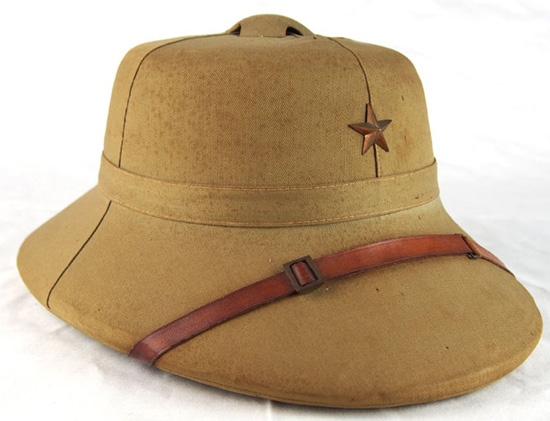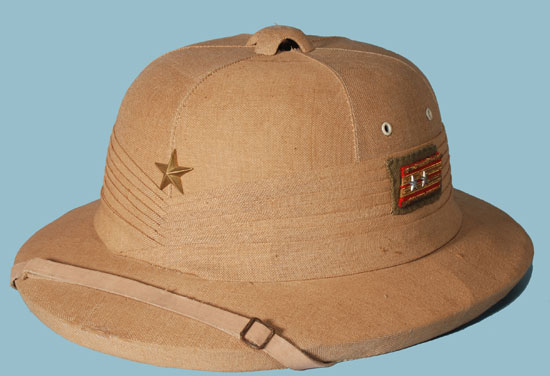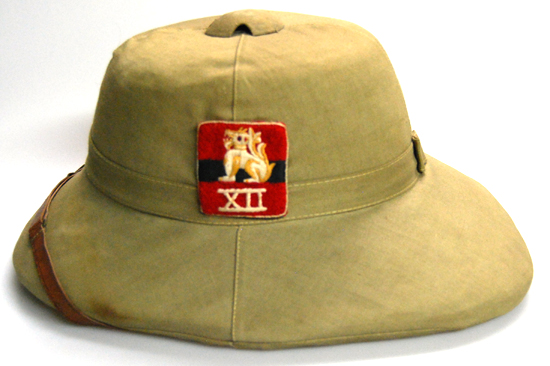
With the fall of Hong Kong on December 25, 1941 and Singapore on February 15, 1942 the British suffered two of its greatest setbacks in the Far East during World War II, with the latter being described by Prime Minister Winston Churchill as the “worst disaster” in British history.
Some 80,000 men were captured at Singapore and untold equipment with it. Today it is possible to encounter British sun helmets (and even steel helmets) that were possibly captured by the Japanese in either Hong Kong, Singapore or in the later invasion of India. However, as it is all too easy to add a Japanese cap star to a helmet these should be viewed with suspicion at the very least. One has turned up that does have all the right signs that indicate that it is likely the “real deal.” Continue reading


 One of the great misconceptions of Japanese tropical headgear of the Second World War is that the pattern known to collectors as “English,” “safari” or “European” was in fact produced outside of Japan. This is likely based on the fact that the helmets are similar in shape externally to the various Indian pattern helmets but also because the maker labels inside are in English.
One of the great misconceptions of Japanese tropical headgear of the Second World War is that the pattern known to collectors as “English,” “safari” or “European” was in fact produced outside of Japan. This is likely based on the fact that the helmets are similar in shape externally to the various Indian pattern helmets but also because the maker labels inside are in English. 